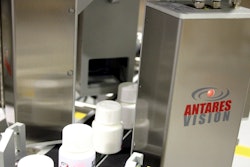
A new Centers for Disease Control and Prevention (CDC) “Vital Signs” report says drug-resistant germs called Carbapenem-Resistant Enterobacteriaceae, or CRE, “have become more resistant to last-resort antibiotics during the past decade,” and “are causing more hospitalized patients to get infections that, in some cases, are impossible to treat.”
It’s not clear if there is an opportunity here for packaging to play a role in addressing the spread of CRE in U.S. healthcare facilities.
CDC’s digital press kit offers the following information:
CRE are lethal bacteria that pose a triple threat:
• Resistance: CRE are resistant to all, or nearly all, the antibiotics we have—even our most powerful drugs of last-resort.
• Death: CRE have high mortality rates—CRE germs kill one in two patients who get bloodstream infections from them.
• Spread of disease: CRE easily transfer their antibiotic resistance to other bacteria. For example, carbapenem-resistant klebsiella can spread its drug-destroying weapons to a normal E. coli bacteria, which makes the E.coli resistant to antibiotics also. That could create a nightmare scenario since E. coli is the most common cause of urinary tract infections in healthy people.
Currently, almost all CRE infections occur in people receiving significant medical care. CRE are usually transmitted from person-to-person, often on the hands of health care workers. In 2012, CDC released a CRE prevention toolkit with in-depth recommendations to control CRE transmission in hospitals, long-term acute care facilities, and nursing homes. Recommendations for health departments are also included. CRE can be carried by patients from one healthcare setting to another. Therefore, facilities are encouraged to work together, using a regional “Detect and Protect” approach, to implement CRE prevention programs.
In addition to detailed data about the rise of CRE, the Vital Signs report details steps health care providers, CEOs and chief medical officers, state health departments, and patients can take now to slow, and even stop, CRE before it becomes widespread throughout the country.
The “Guidance for Control of CRE 2012 Toolkit offers eight “core measures facilities should follow,” which include hand hygiene, contract precautions, healthcare personnel education, use of devices, patient and staff cohorting, laboratory notification, antimicrobial stewardship, and CRE screening.
In the use of devices measure, the guidance says, “Use of devices (e.g., central venous catheters, endotracheal tubes, urinary catheters) puts patients at risk for device-associated infections and minimizing device use is an important part of the effort to decrease the incidence of these infections. Additionally, device use has been associated with carbapenem resistance among Enterobacteriaceae. Therefore, minimizing device use in all healthcare settings should be part of the effort to decrease the prevalence of all MDROs including CRE. In acute and long-term care settings, device use should be reviewed regularly to ensure they are still required and devices should be discontinued promptly when no longer needed. For more information on preventing device-associated infection including appropriate use of devices please see and [this reference]."




















